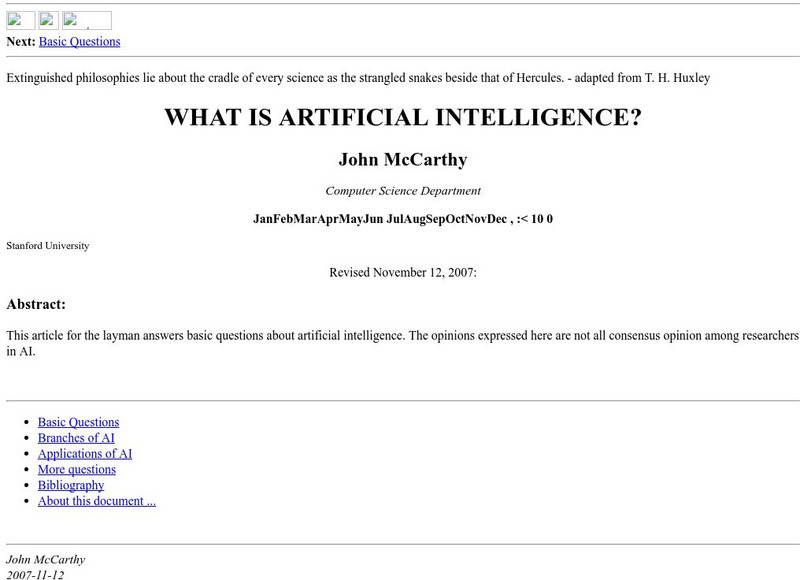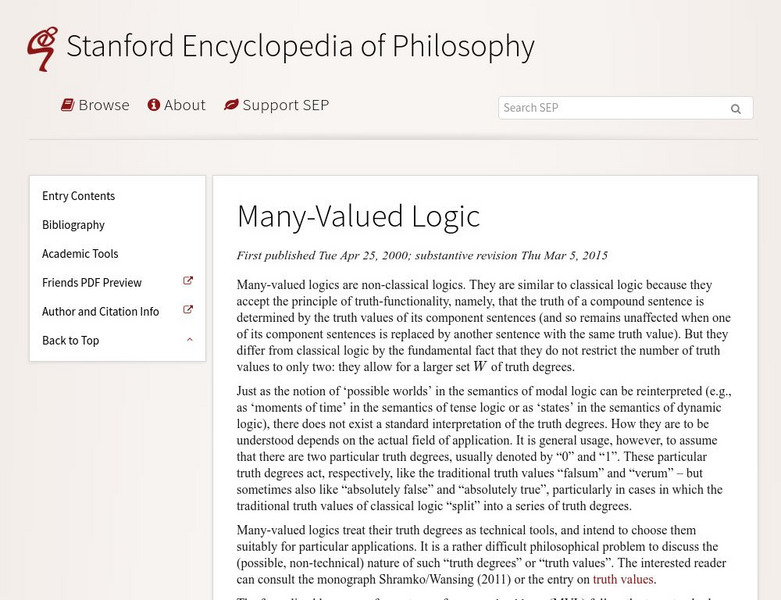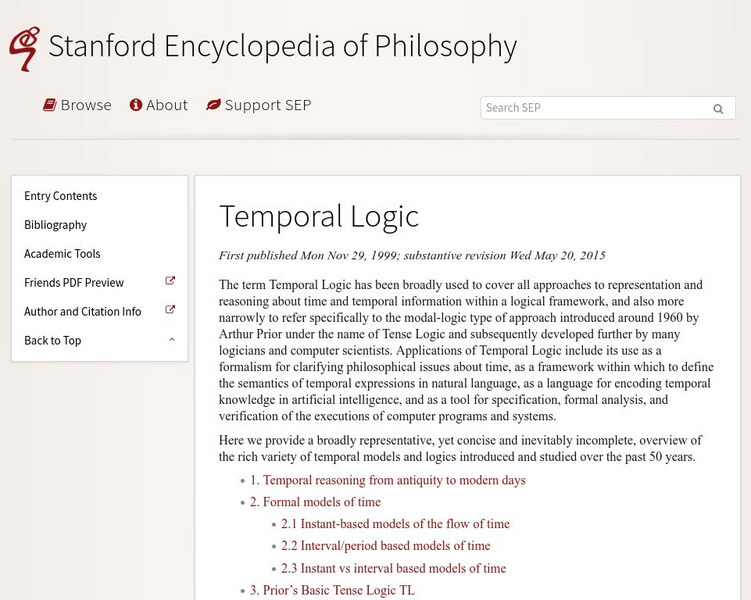Computer Science Field Guide
Computer Science Field Guide
Imagine computer science all summed up in one book. This resource provides 16 chapters that cover many aspects of computer science, ranging from algorithms to software engineering. The e-book contains links to applets to help explain...
Curated OER
Breaking News English: Google's New Car
In this Google's new car instructional activity, students read the article, answer true and false questions, complete synonym matching, complete phrase matching, complete a gap fill, answer short answer questions, answer discussion...
Curated OER
Language with Linguistic Legos
Students visualize and manipulate sentences as building blocks, and, given a key, use Legos™ to demonstrate how to construct sentences of variety (simple, compound, complex, and compound-complex).
Stanford University
Stanford University: What Is Artificial Intelligence?
An overview of artificial intelligence (AI), the different branches of AI, applications of artificial intelligence, and the like.
Massachusetts Institute of Technology
Mit: Artificial Intelligence Laboratory Publications
An extensive collection of essays from the Massachussets Institute of Technology on advanced topics in the field of artificial intelligence.
Stanford University
Many Valued Logic/stanford Encyclopedia of Philosophy
Explains the logical theory of "many-valued logic," a modern alternative to classic logic. Sections address its history, notation and proofs, and applications to linguistics, mathematics, philosophy, and artificial intelligence. For the...
Stanford University
Temporal Logic/stanford Encyclopedia of Philosophy
Discusses the temporal logic of Arthur Prior, a type of modal logic. After technical definitions, author addresses related philosophical issues. Also summarizes applications in natural language, computer science, and artificial...
Wikimedia
Wikipedia: Sail Programming Language
This site contains a Wikipedia description of SAIL programming.
TeachEngineering
Teach Engineering: Measuring Light Pollution
Students are introduced to the concept of light pollution by investigating the nature, sources and levels of light in their classroom environment. They learn about the adverse effects of artificial light and the resulting consequences on...










